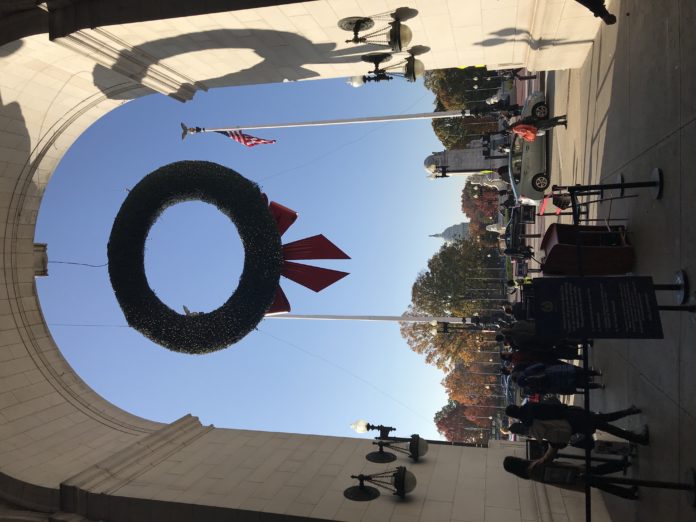As the holiday season comes to an end and 2022 comes into focus, broadcasters have several dates and deadlines to keep up with in January and early February.
David Oxenford, the respected Washington, D.C., communications attorney with Wilkinson Barker Knauer LLP, has noted some of the important dates media industry C-Suite professionals should be tracking.
Oxenford starts with some of the annual dates that always fall in January.
By January 10, full-power radio, TV, and Class A licensees should have their quarterly issues/programs lists uploaded to their online public file. The lists are meant to identify the issues of importance to the station’s community and the programs that the station broadcast in October, November and December that addressed those issues. “Prepare the lists carefully and accurately, as they are the only official records of how your station is serving the public and addressing the needs and interests of its community,” Oxenford advises.
Class A licensees must upload to their public file by January 10 documentation of their continuing Class A eligibility for October-December 2021. For noncommercial educational stations not affiliated with the Corporation for Public Broadcasting, if your station conducted on-air fundraising for third parties during the last three months of 2021 that interrupted normal programming, documentation of those efforts must also be uploaded to the public file.
An annual obligation for television stations is to prepare and file their annual Children’s Television Programming Report (Form 2100, Schedule H – formerly Form 398). Also due is a certification of compliance with commercial limits in children’s programming. Schedule H would normally be due to be filed at the FCC on January 30 but, as that date falls on a Sunday in 2022, the FCC filing deadline this year is January 31, the next business day. Records documenting compliance with the limits on the number of commercial minutes that stations can allow in children’s programming are also due to be uploaded to each full-power and Class A TV station’s public file by January 31—another January 30 deadline pushed to the next business day. As a reminder, the quarterly filing requirements were replaced with annual filings as part of the 2019 KidVid rule changes.
An important deadline also falls this month for LPTV stations and TV translators.
Analog TV translators and digital LPTV construction permit holders whose CPs have expiration dates that have expired that received a one hundred and eighty day extension of the July 13, 2021 digital transition (or construction) deadline must be operating digitally by January 10, 2022 or by an earlier January date specified on the station’s extension authorization.
“While in a few cases, the FCC is granting requests to toll that deadline, very specific showings as to why construction was delayed for reasons beyond the control of the broadcaster need to be made or the authorizations of stations not operating digitally by the January 10 deadline will be cancelled,” Oxenford says.
A MID-MARKET MUST
Also important for some TV stations, specifically those in DMAs 71-80 affiliated with one of the top four TV networks, is the requirement to comply with the FCC’s audio description rules beginning January 1, 2022.
The audio description (formerly known as video description) rules make video programming more accessible to blind or visually impaired persons by requiring the use of an audio subchannel to provide descriptions of the visual action in a TV program that is occurring on screen. The affected DMAs are Omaha; Wichita-Hutchinson; Springfield, MO; Charleston-Huntington; Columbia, SC; Rochester, NY; Flint-Saginaw-Bay City; Huntsville-Decatur; Portland-Auburn; and Toledo.
For radio, January 1 brings new higher rates for all digital streaming, including simulcasting, as a cost-of-living increase in the increased SoundExchange royalties as recently announced by the Copyright Royalty Board (though payments are not due for January streaming until 45 days after the end of the month). But most webcasters do need to pay their minimum annual fees by January 31 (now $1000 per stream for commercial and noncommercial streams not affiliated with a school or CPB). Noncommercial educational webcasters (affiliated with a school or college), not covered by deals with NPR and CPB, must make elections about recordkeeping requirements that will apply to their stations by January 31.
Looking ahead to February, television and radio stations in several states must file applications for license renewal and file and upload EEO reports. By February 1, TV stations in Kansas, Nebraska, and Oklahoma and radio stations in New York and New Jersey must file their license renewal applications through the FCC’s Licensing and Management System (LMS) on Form 2100, Schedule 303-S.
Stations filing for renewal of their license should spend the next few weeks reviewing the contents of their online public file and making sure that all required documents are complete and were uploaded on time.
Also on or before February 1, all radio and TV station employment units (a station employment unit is a station or stations that share at least one full-time employee, are in the same geographic area, and are under common control) with five or more full-time employees licensed to communities in Arkansas, Kansas, Louisiana, Nebraska, New Jersey, New York, and Oklahoma must upload to their online public inspection file an Annual EEO Public Inspection File report. This report covers their hiring and employment outreach activities for February 1, 2021 through January 31, 2022.
These broadcast licensees must also post on the homepage of their station website (if they have one) a link to the most recent report.





